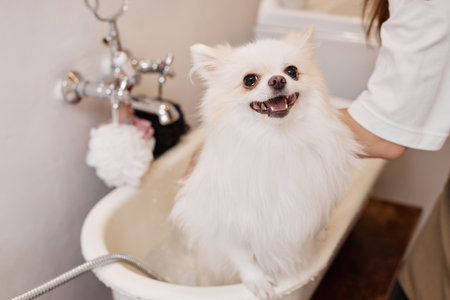1. Understanding the Importance of Dental Care for Cats
Keeping your cat’s teeth clean isn’t just about fresh breath—it’s essential for their overall health. Just like humans, cats can suffer from dental issues such as gum disease, plaque buildup, and tooth decay. If left untreated, these problems can lead to pain, difficulty eating, and even serious infections that may affect other organs.
Why Cat Dental Health Matters
Many pet owners overlook feline dental care, but poor oral hygiene can cause severe health issues. Here are some reasons why maintaining your cat’s dental health is crucial:
| Reason | How It Affects Your Cat |
|---|---|
| Prevents Gum Disease | Gingivitis and periodontitis can cause pain, swelling, and tooth loss. |
| Reduces Risk of Infections | Bacteria from the mouth can enter the bloodstream and harm vital organs. |
| Avoids Painful Tooth Decay | Cavities and damaged teeth can make eating uncomfortable for your cat. |
| Supports Overall Well-being | Good oral health contributes to a longer and healthier life. |
Signs of Dental Problems in Cats
Cats are experts at hiding discomfort, so it’s important to watch for signs that could indicate dental issues:
- Bad breath (persistent foul odor)
- Drooling or excessive salivation
- Difficulty chewing or dropping food while eating
- Red, swollen, or bleeding gums
- Pawing at the mouth or face
- Loss of appetite or weight loss due to pain while eating
- Yellow or brown tartar buildup on teeth
- Loose or missing teeth
The Long-Term Benefits of Proper Dental Care
By taking care of your cat’s teeth regularly, you can prevent serious health complications and ensure they stay happy and comfortable. Routine dental care helps avoid costly vet visits for advanced dental treatments. Plus, a cat with healthy teeth enjoys mealtime without discomfort and stays active well into their senior years.
What’s Next?
Now that you understand why dental care is vital for your feline friend, let’s dive into how you can keep their teeth clean effectively. In the next section, we’ll explore practical ways to maintain your cat’s oral hygiene at home.
Signs of Dental Problems in Cats
Just like humans, cats can experience dental issues that cause discomfort and affect their overall health. Since our feline friends are experts at hiding pain, its important to recognize the signs of potential dental problems early. Here are some common symptoms to watch for:
Common Signs of Dental Issues
| Symptom | Description |
|---|---|
| Bad Breath (Halitosis) | A persistent foul smell from your cat’s mouth may indicate plaque buildup, gum disease, or infection. |
| Difficulty Eating | Your cat may chew on one side of their mouth, drop food, or show reluctance to eat dry kibble. |
| Excessive Drooling | If you notice excessive drool, especially if it’s thick or tinged with blood, your cat might have oral pain or an infection. |
| Pawing at the Mouth | Cats with dental discomfort may frequently paw at their face or mouth as a response to pain. |
| Red or Bleeding Gums | If your cat’s gums appear inflamed, swollen, or bleed easily, they could be suffering from gingivitis or periodontal disease. |
| Behavioral Changes | Your usually playful and affectionate cat may become irritable, withdrawn, or avoid being touched around the face. |
The Importance of Early Detection
Catching these signs early can help prevent more serious health issues down the road. If you notice any of these symptoms, schedule a vet visit as soon as possible. Dental problems can lead to infections that affect other organs, so regular check-ups and prompt care are essential for keeping your cat healthy and happy.

3. How to Brush Your Cat’s Teeth
Brushing your cat’s teeth may sound like a challenge, but with patience and the right approach, it can become a stress-free routine. Follow these steps to introduce your feline friend to toothbrushing while keeping them comfortable.
Step 1: Choose the Right Toothbrush and Toothpaste
Selecting the proper tools is essential for effective dental care. Avoid human toothpaste, as it contains ingredients that are toxic to cats. Instead, opt for pet-safe products designed specifically for felines.
| Item | Description |
|---|---|
| Cat Toothbrush | A small, soft-bristled toothbrush or a finger brush made for cats. |
| Cat-Friendly Toothpaste | Flavored with chicken or seafood to make brushing more enjoyable. |
Step 2: Get Your Cat Comfortable with Mouth Handling
Your cat needs time to adjust to having their mouth touched. Start by gently lifting their lips and rubbing their gums with your finger for a few seconds each day. Reward them with praise or treats after each session.
Step 3: Introduce the Toothpaste
Squeeze a small amount of cat-friendly toothpaste onto your finger and let your cat lick it off. This helps them get used to the taste before using a toothbrush.
Step 4: Start Brushing Gradually
- Day 1-2: Let your cat lick the toothpaste from the brush.
- Day 3-5: Gently touch their teeth with the brush without scrubbing.
- Day 6+: Begin brushing in small circular motions, focusing on the outer surfaces of the teeth.
Step 5: Keep It Short and Positive
Aim for just a few seconds at first, gradually increasing the duration as your cat becomes more comfortable. Always end on a positive note with praise or a treat.
4. Alternative Dental Care Options
Brushing your cat’s teeth is the gold standard for dental care, but we all know that not every feline is a fan of having their mouth handled. Fortunately, there are alternative ways to help maintain your cat’s oral hygiene without the stress of daily brushing. From dental treats to professional cleanings, here are some effective options to consider.
Dental Treats and Chews
Dental treats and chews are a great way to support your cat’s oral health while giving them a tasty reward. Many of these treats are specially designed to reduce plaque and tartar buildup through mechanical chewing action or by containing enzymes that promote dental health.
| Treat Type | Benefits |
|---|---|
| Crunchy Dental Treats | Help scrape off plaque and tartar as your cat chews. |
| Dental Chew Sticks | Encourage longer chewing time for better cleaning effect. |
| Treats with Enzymes | Aid in breaking down bacteria and preventing plaque formation. |
Water Additives
If your cat isn’t keen on treats or chews, water additives can be an easy way to improve their oral hygiene. These liquid solutions are added directly to their drinking water and contain ingredients that help fight bacteria, freshen breath, and prevent plaque buildup.
How to Use Water Additives:
- Add the recommended amount (as per product instructions) to your cat’s water bowl daily.
- Ensure fresh water is available at all times to encourage hydration.
- Select vet-approved products that are safe for cats.
Professional Cleanings
No matter how well you care for your cats teeth at home, professional cleanings by a veterinarian are sometimes necessary. Vets can perform deep cleanings under anesthesia, removing stubborn plaque and tartar that home care cant address.
When Should Your Cat Get a Professional Cleaning?
- If they have persistent bad breath despite good home care.
- If you notice visible tartar buildup or red, swollen gums.
- If your vet recommends it during regular checkups.
A combination of these alternative dental care options can help keep your cat’s teeth clean and healthy without the struggle of daily brushing. Finding what works best for your feline friend will go a long way in preventing dental disease and ensuring their overall well-being.
5. Preventative Tips for Long-Term Dental Health
Keeping your cat’s teeth clean isn’t just about brushing—it’s about building healthy habits that support strong teeth and gums. By following these preventative tips, you can help your feline maintain excellent dental health for years to come.
Schedule Regular Vet Check-Ups
Routine veterinary visits are essential for catching dental issues early. Your vet will check for signs of gum disease, plaque buildup, and other oral health concerns. Professional cleanings may also be recommended based on your cat’s needs.
Provide a Balanced Diet
Your cat’s diet plays a significant role in their dental health. Feeding them the right foods can help reduce plaque and tartar buildup while promoting strong teeth and gums.
| Food Type | Dental Benefits |
|---|---|
| Dry Kibble | Crunchy texture helps scrape away plaque. |
| Dental Treats | Specially designed to reduce tartar and freshen breath. |
| Canned Food | Softer texture, but can contribute to plaque buildup if not balanced with other foods. |
| Raw Bones (Vet-Approved) | Naturally helps clean teeth, but should always be given under supervision. |
Incorporate Dental Chews and Toys
Cats love to chew, and providing them with dental-friendly toys or treats can help keep their teeth clean. Look for products designed to remove plaque while being safe for your feline friend.
Create a Brushing Routine
If your cat tolerates it, brushing their teeth regularly is one of the best ways to prevent dental disease. Use a cat-specific toothbrush and toothpaste to gently clean their teeth at least a few times per week.
Monitor for Signs of Dental Issues
Catching problems early can prevent serious complications. Keep an eye out for symptoms such as:
- Bad breath
- Drooling excessively
- Pawing at the mouth
- Difficulties eating or chewing
- Red or swollen gums
- Buildup of yellow or brown tartar on teeth
If you notice any of these signs, schedule a vet visit promptly to address potential dental concerns before they worsen.


